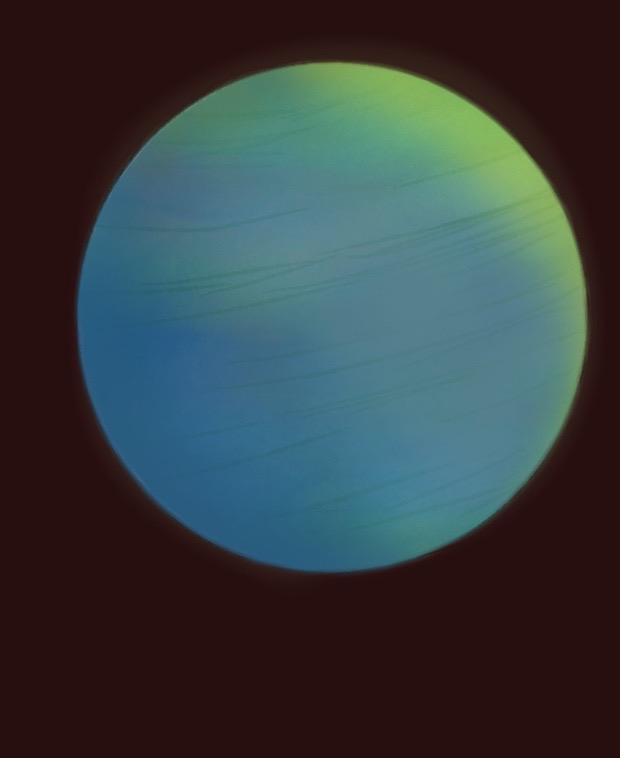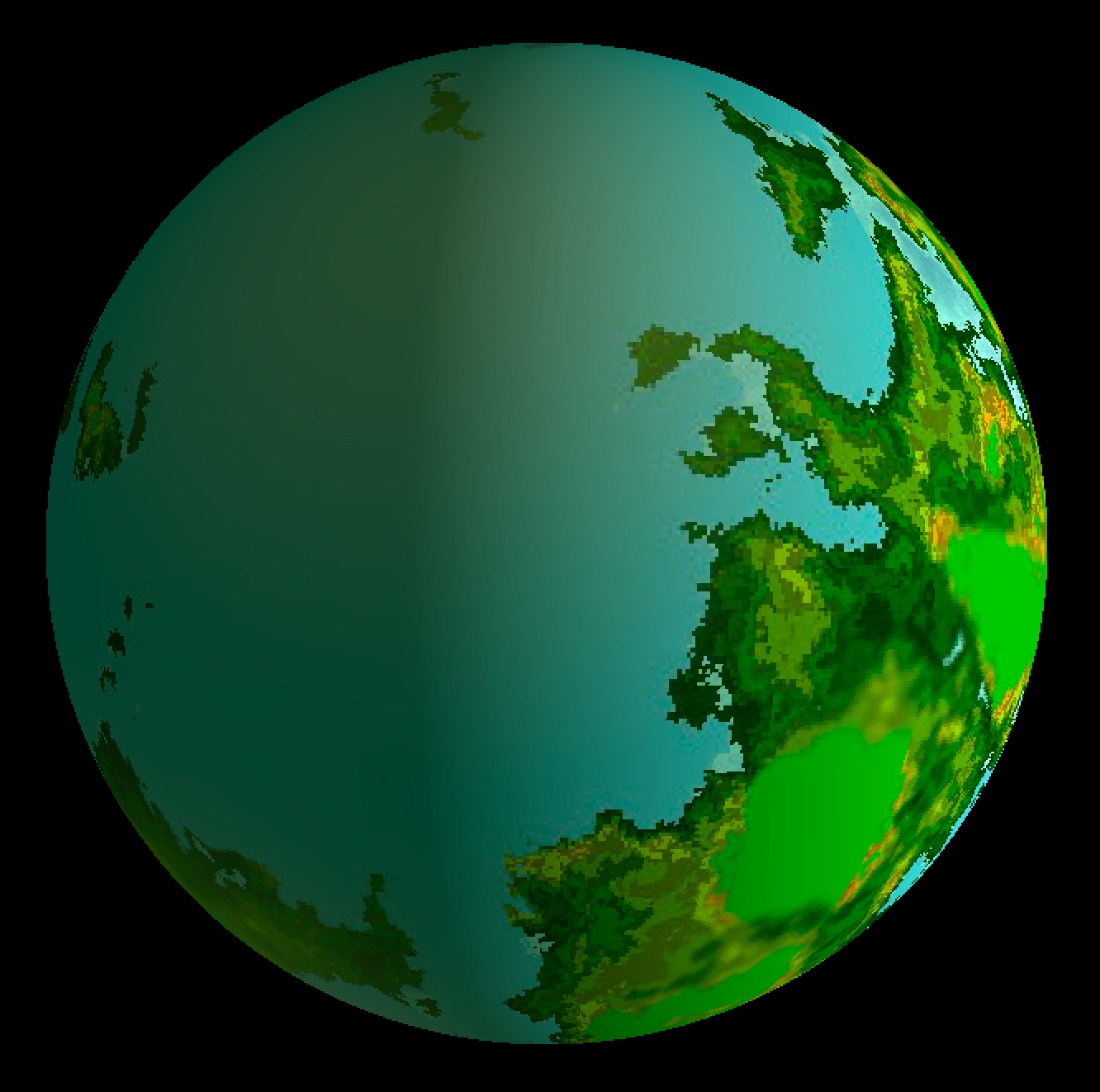(Kepler-452 b Ocean Planet Credit: Chise Hatsuoka, Habitable Research Unit SGH Moriyama High School)
Kepler-452b is located about 1,400 light-years away in the Cygnus constellation and is thought to be the first rocky planet discovered in the habitable zone. Its orbit is 384 days around its host star, Kepler-452, which is a G-type sun-like star around 60 billion years old. Since the planet is so similar to Earth, it has been called ‘Earth’s Cousin.’
(Kepler-452 b Credit: Fuka Takagi and Yosuke Yamashiki, generated using Planet Map Generator and OpenGL)
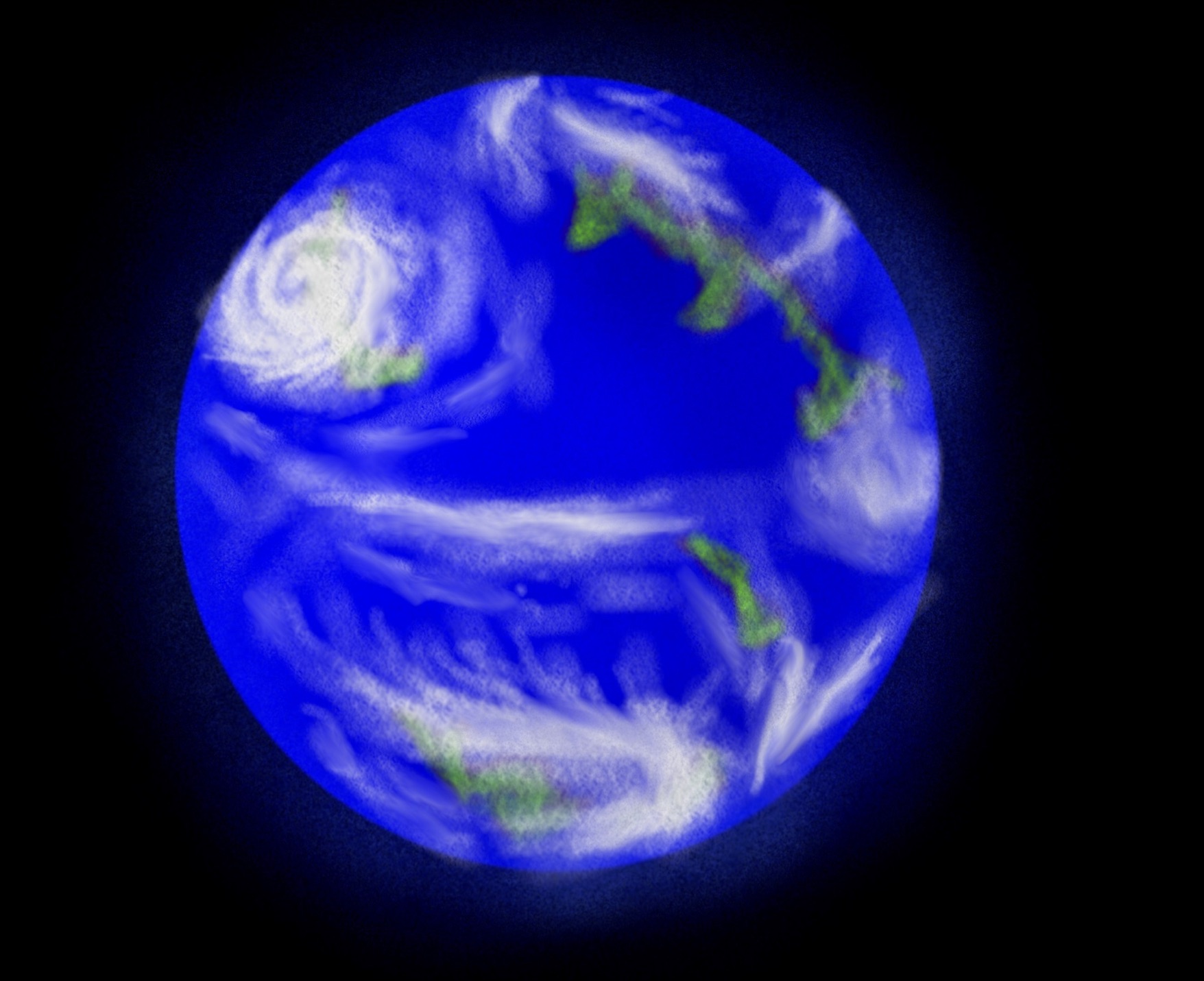
(Credit: Shione Fujita & SGH Moriyama High School)
Using ExoKyoto and the Weiss and Marcy method, the mass was estimated at about 4 times that of Earth, which is why the exoplanet is considered a ‘Super-Earth.’ Based on the assumption that it can easily have a large amount of water under high gravity and the fact that it is difficult to dissipate the acquired water, we imagine that this Ocean Planet is almost entirely occupied by oceans 30-50 km deep. If this is the case, the planet wouldn’t have continents but it is assumed to have only chains of islands like Hawaii.
However, since the host star is about 1.5 billion years older than our Sun, it is expected to radiate more energy than the Sun, and Kepler-452b probably receives more energy than the Earth. Therefore, the water on the surface might not exist due to the (runaway) greenhouse effect. Additionally, the planet Kepler-452b is about 1.5 billion years older than the Earth, so a detailed study of the surface environment could provide information on environmental changes that Earth might face in the future.
In any case, it is important to verify the existence or non-exitance of the planetary surface environment and ocean through detailed follow-up observations in the future.
(文責:藤田汐音・佐々木貴教)
The location of Kepler-452 shown on the ExoKyoto Stellar Screen 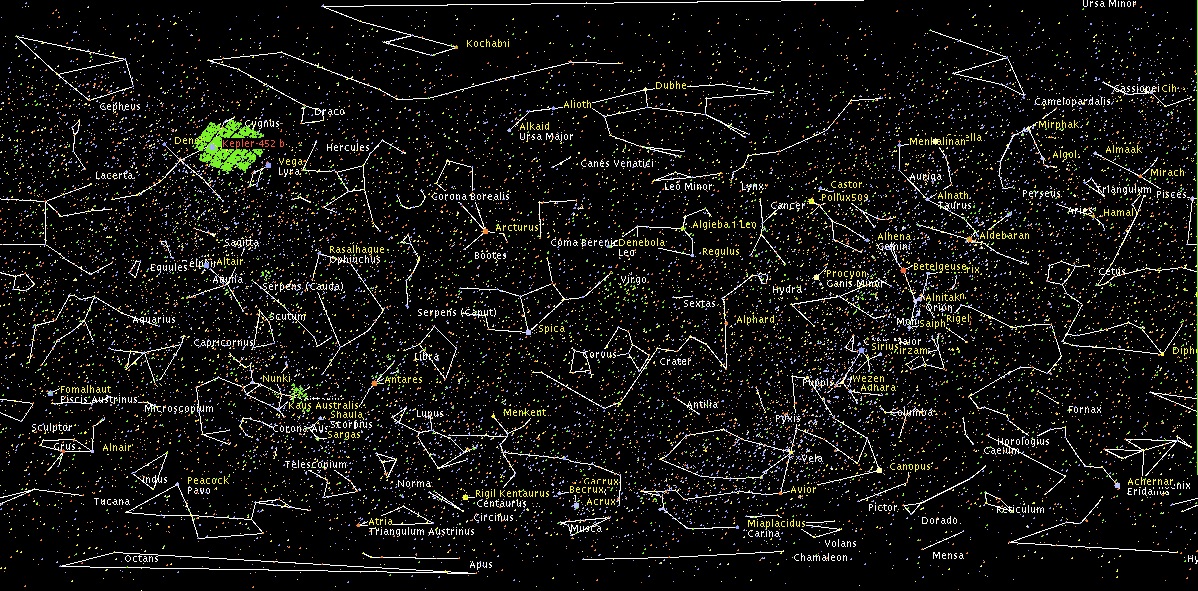
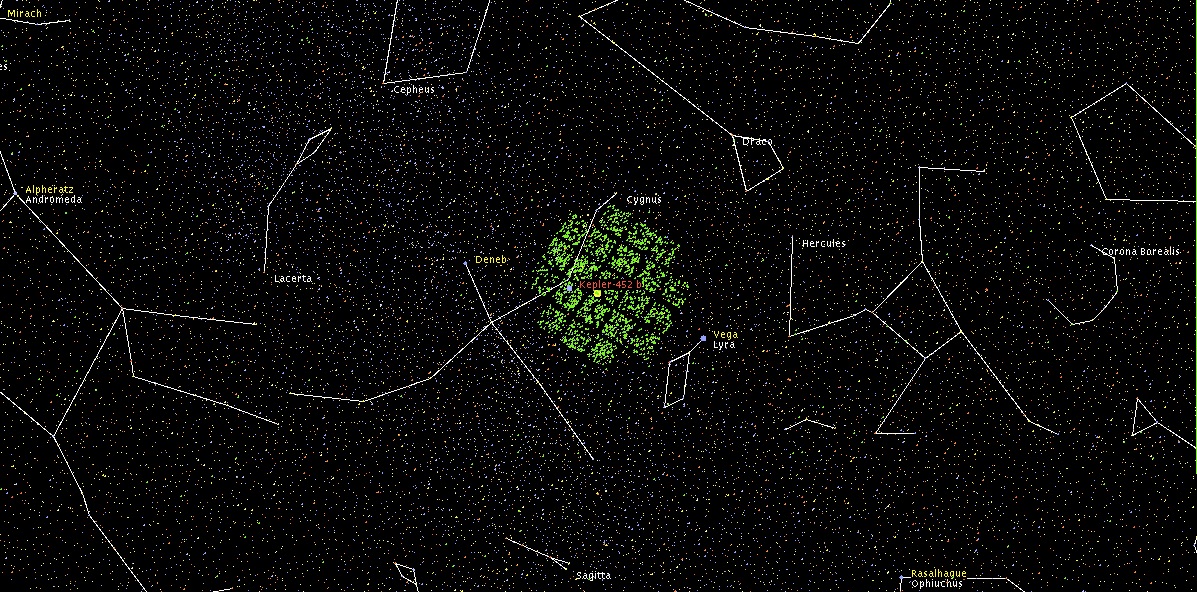
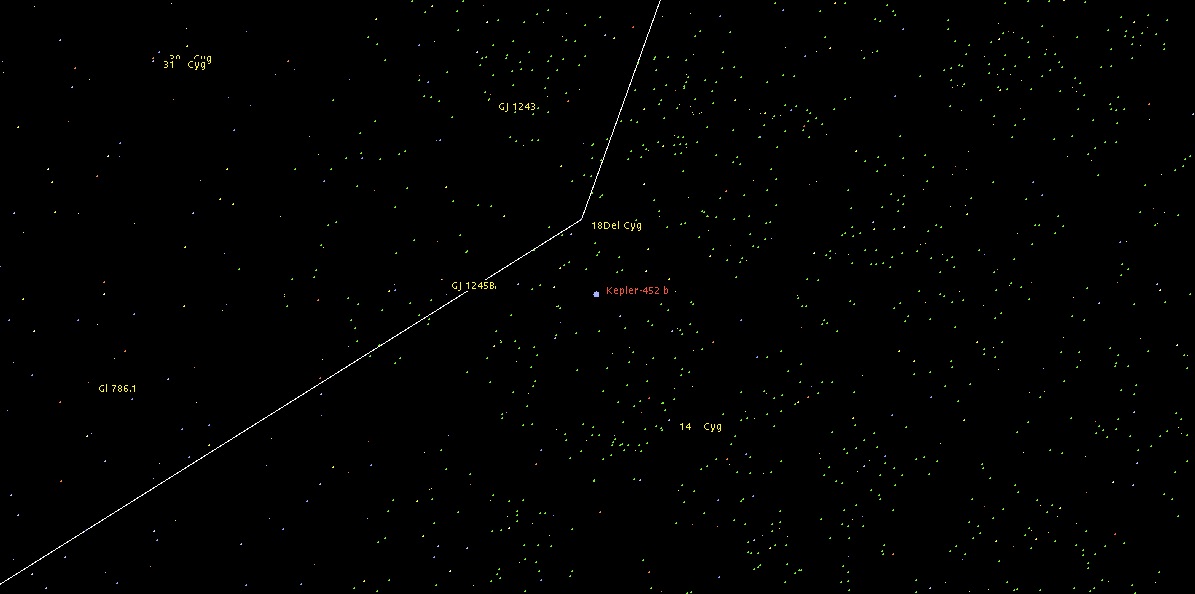
For more information about Kepler-452b, please visit the ExoKyoto Database:
http://www.exoplanetkyoto.org/exohtml/Kepler-452_b.html
Journal Articles:
3.) Quantitative estimates of the surface habitability of Kepler-452b
WEB Articles:
1.) Kepler-452b: Earth’s Bigger, Older Cousin — Briefing Materials
2.) One Of The Most Earth-Like Worlds We’ve Found May Not Actually Exist
3.) Kepler 452 b: Inhabitable ‘Earth 2.0’ could be statistical mirage, study shows
